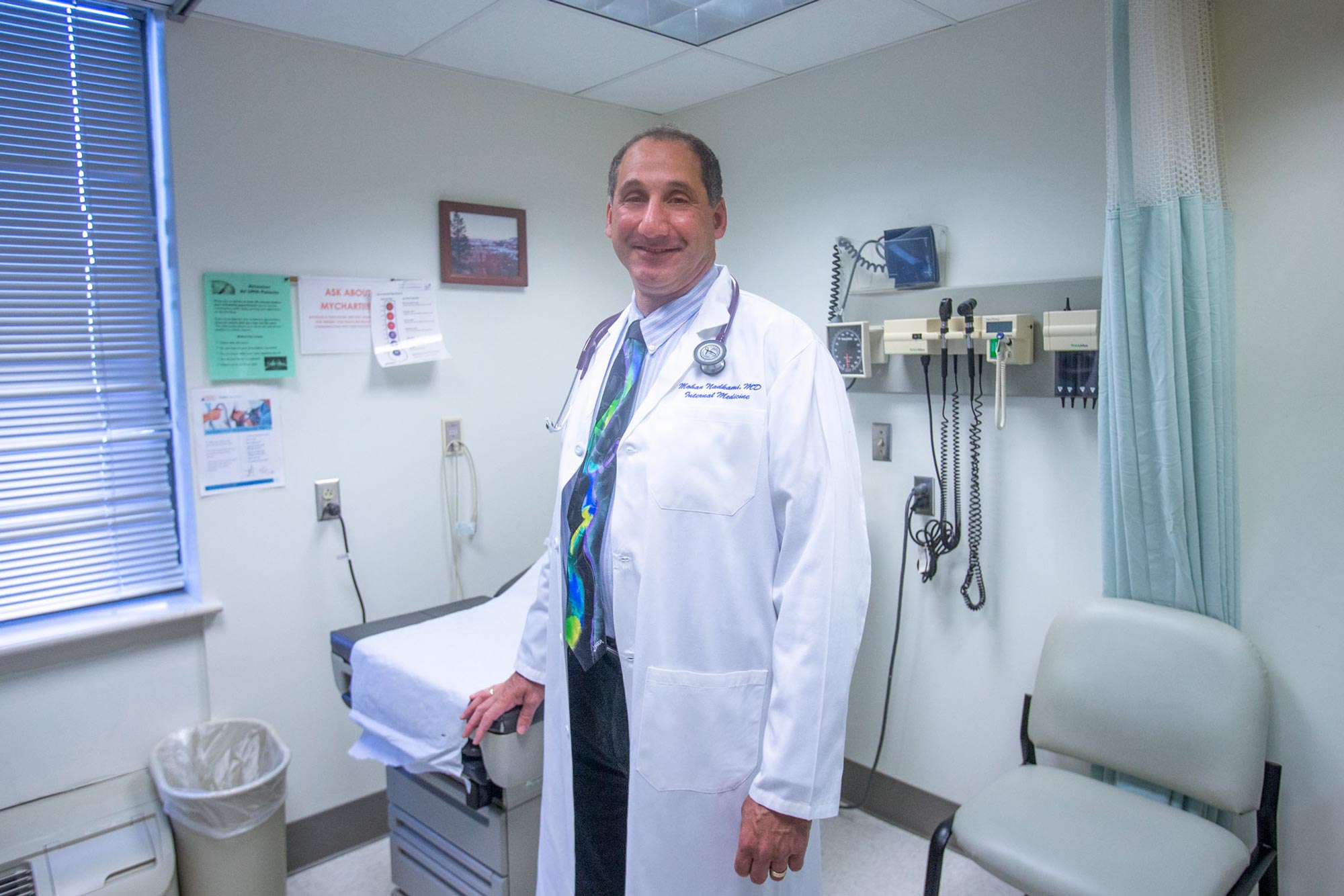Find the latest information on the University’s response to the coronavirus here.
One of the major effects of the COVID-19 global pandemic has been skyrocketing unemployment, and with it, a loss of health insurance.
That’s why the Charlottesville Free Clinic has been such a godsend to so many community members.
The clinic, founded in 1992 by Dr. Mohan Nadkarni and Dr. Paul DeMarco, provides free medical and dental care, as well as free prescriptions, to people who have nowhere else to turn.
Nadkarni, a professor at the University of Virginia School of Medicine, said COVID-19 has certainly presented challenges.
If patients suspect they have the coronavirus, they are examined by doctors at the clinic, who determine whether they should be tested by a partnering local health care provider.
“There have been big changes at the Free Clinic in the methods of taking care of patients,” Nadkarni said, “but we want to make it clear that we have been, and will be, there for our underserved population in Charlottesville.
“Our volunteers have been incredibly dedicated and are still continuing to provide care.”
UVA Today caught up with Nadkarni to learn more about how the clinic is navigating these unprecedented times.
Q. For people who may not be that familiar with the Charlottesville Free Clinic, can you speak to its importance?
A. There are huge health disparities in people being able to access care and vulnerable populations suffering more than higher-socioeconomic-status patients. The more vulnerable populations have higher admission rates, higher mortality rates and are having more difficulty getting testing.
The tenets of the free clinic are to fill the gaps in care in the community and to ensure that all patients in the community have good access to excellent health care. So that’s what we have been doing and will be doing.
Q. How has COVD-19 affected the services at the clinic?
A. We’ve only been serving between 60% to 70% of our usual volumes. We’ve gone to a majority of telehealth visits, with volunteers providing care over the internet, but still with individual care.
We’ve moved our pharmacy operations to curbside pickups. A lot of our patients are having trouble getting medicines elsewhere, and we’re able to still provide that for them. We’re also providing dental services as a drive-through for screening. And then, if it appears that they have more of a dental emergency, then we’re still seeing them in our dental clinic.
Q. In terms of using telehealth, which has become so much more prevalent – even before COVID-19 – how are you using that to your advantage?
A. Just as we’re doing at UVA, we’re utilizing some of the telehealth programs that get visual cues from our patients while we’re talking to them during the evaluations. There’s a lot you can do in terms of monitoring someone’s blood pressure and adjusting diabetes medicines over the phone or video, so that you don’t actually have to be face-to-face with the patients and can still provide good care.
Q. What have been the biggest challenges for you during these times?
A. For telehealth, just like with our UVA practices, there’s a digital divide; not everybody has the computer capabilities or feels comfortable with them, particularly some of our elderly folks who may be less facile with the technology.
The other barriers to seeing people are that, naturally, people don’t want to come in for social distancing reasons, so they’re less likely to come in for a face-to-face unless it’s absolutely necessary.
Q. What are the clinic’s goals in dealing with COVID-19, both in the short- and long-term?
A. Although everything is very fluid, our goal is to return to regular services as people get used to coming in for more face-to-face visits.
On the other hand, I think people all over medicine are realizing we may not ever go back to 100% face-to-face visits and that perhaps we’ll be using telehealth a good bit more now that we’ve had some experience with it and have figured out who needs to be seen in the office and who can be seen over telehealth.
Q. If community members reading this article want to help, what can they do?
A. Although we’re a free clinic, it’s not a free clinic to provide the care. Patients aren’t charged, but there is plenty of money that is required to actually provide the care and the drugs that we do. So we’re certainly in need of more resources.
The best way to donate is to go on to our website. We’re happy to have your time or your money. We need help in stocking the pharmacy, administrative help, calling patients who may be socially isolated – all those things are potentially useful.
Like many community non-profits, COVID is creating challenges [for us]. Any support that the UVA community can provide will pay off tenfold in the amount of good that we can do.
Media Contact
Article Information
May 7, 2020
/content/pandemic-isnt-stopping-charlottesville-free-clinic-fulfilling-its-mission

